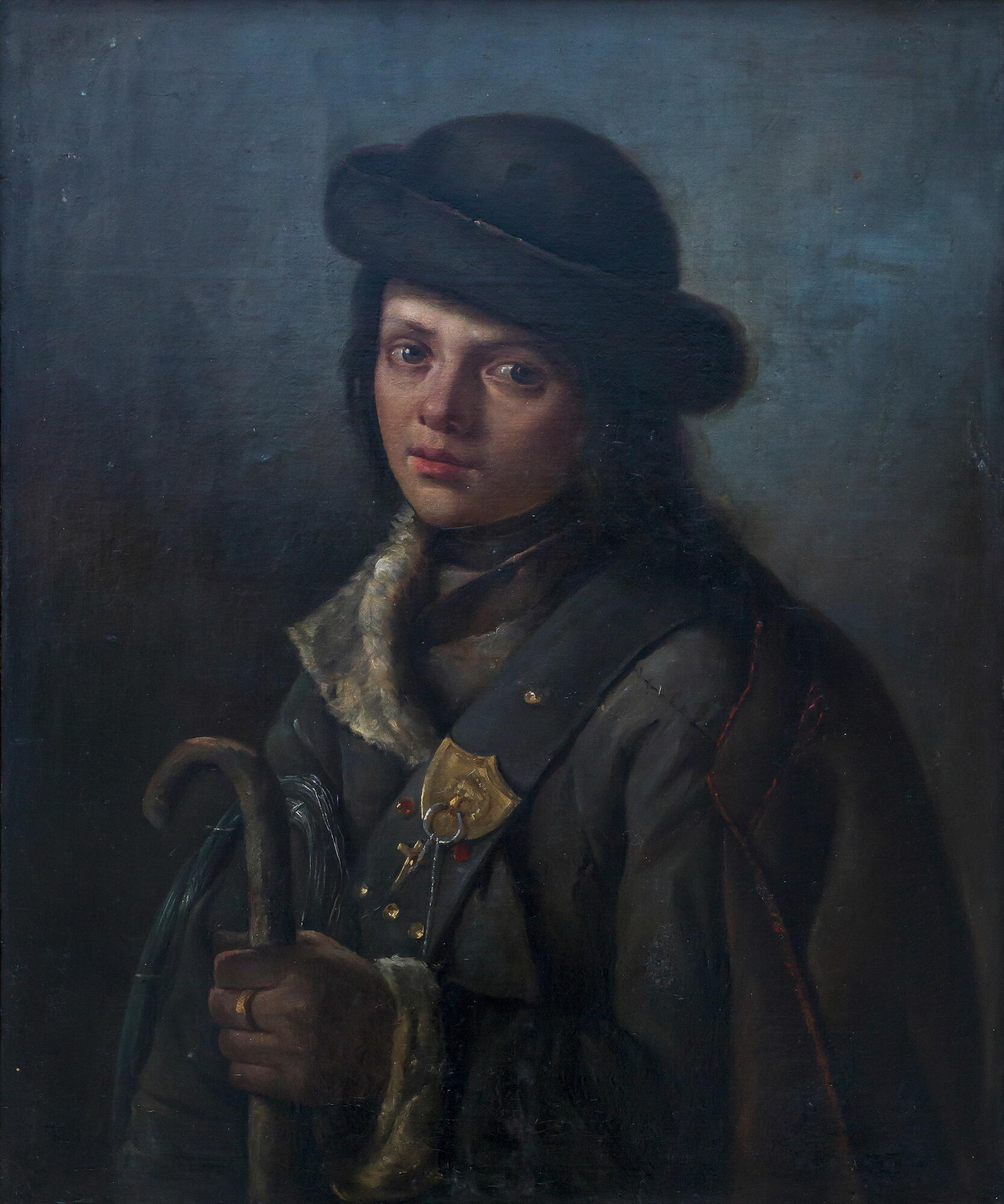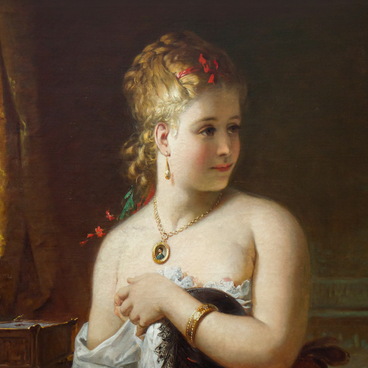The “Portrait of a Young Man with a Staff” from the collection of the Ulyanovsk Regional Art Museum was painted by an unknown artist in the first half of the 19th century. The picture is an example of German Romanticism. Romantics opposed the conventions of classicism and were in search of higher spiritual harmony, national and individual originality. Romantic heroes are idealized, their feelings are in juxtaposition to reality. In their work, Romantic artists sought an escape from the rationality of the capitalist world, and the inertia of feudal traditions.
Romanticism was not only about pursuing a dream — it also included gloomy and mystical moods that resulted from the inability to escape from decay. The longing for the supernatural drove artists to both euphoria and bitter disappointment. Romantics sought solace in the ideals of the Middle Ages and the beauty of nature, creating their own alternative reality. Among German writers and composers, Romanticism was supported by Heinrich Heine, Ernst Theodor Amadeus Hoffmann, Friedrich Schiller, Ludwig van Beethoven, Richard Wagner, Franz Liszt, and Felix Mendelssohn.
The protagonist of the painting from the Ulyanovsk Regional Art Museum is a romantic hero. A young man with a staff left his parental home and went into the big world in search of his path. A romantic hero is an extraordinary, mysterious, and impulsive person, for whom exceptional circumstances become the norm. In the hero’s soul, contradictions begin to struggle; Romanticism discovers the unique inner world of a human being and emphasizes the value of one’s personality.
Romantic artists depicted people with the help of contrast and antithesis: on the one hand, a human being was considered to be the crown of creation, while on the on the other, a person was a weak-willed toy in the hands of fate. In the plot, look and tone of the “Portrait of a Young Man with a Staff” we feel the presence of unknown and uncontrollable forces. The protagonist is no longer the master of his feelings — he becomes a victim of his own passions. He is lonely, misunderstood, forced to flee from the familiar world, which is convenient for everyone but looks like a prison to him. For a romantic hero, freedom is more important than life.
Romanticism was not only about pursuing a dream — it also included gloomy and mystical moods that resulted from the inability to escape from decay. The longing for the supernatural drove artists to both euphoria and bitter disappointment. Romantics sought solace in the ideals of the Middle Ages and the beauty of nature, creating their own alternative reality. Among German writers and composers, Romanticism was supported by Heinrich Heine, Ernst Theodor Amadeus Hoffmann, Friedrich Schiller, Ludwig van Beethoven, Richard Wagner, Franz Liszt, and Felix Mendelssohn.
The protagonist of the painting from the Ulyanovsk Regional Art Museum is a romantic hero. A young man with a staff left his parental home and went into the big world in search of his path. A romantic hero is an extraordinary, mysterious, and impulsive person, for whom exceptional circumstances become the norm. In the hero’s soul, contradictions begin to struggle; Romanticism discovers the unique inner world of a human being and emphasizes the value of one’s personality.
Romantic artists depicted people with the help of contrast and antithesis: on the one hand, a human being was considered to be the crown of creation, while on the on the other, a person was a weak-willed toy in the hands of fate. In the plot, look and tone of the “Portrait of a Young Man with a Staff” we feel the presence of unknown and uncontrollable forces. The protagonist is no longer the master of his feelings — he becomes a victim of his own passions. He is lonely, misunderstood, forced to flee from the familiar world, which is convenient for everyone but looks like a prison to him. For a romantic hero, freedom is more important than life.



